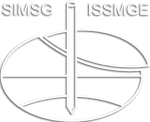Effect of CO2-clay interaction on swelling stress generation capacity and porosity of clay-rich medium exposed to CO2
Effect of CO2-clay interaction on swelling stress generation capacity and porosity of clay-rich medium exposed to CO2
Among clay minerals, smectite adsorbs a considerable amount of CO2 at geological sequestration conditions resulting in volumetric expansion or swelling-stress generation in free or constant volume conditions. The adsorption-induced volumetric strain can cause a reduction in the porosity and permeability of smectite at constant volume conditions, which in turn will influence the migration of CO2 in a media. Simultaneously, in constant volume conditions generation of swelling stress will affect the stress regime of the medium surrounding the smectite. The present study illustrates the effect of CO2 adsorption-induced strain on the porosity and state of stress of the smectite-rich medium. A coupled hydromechanical model that incorporates the adsorption-induced strain due to the interaction between clay minerals and CO2 is employed to investigate the behavior of smectite-rich medium. The model uses a generalized porosity change equation that captures the contribution from the effective stress, adsorption-induced strain, and compressibility of the solid grains. The effects of overburden stress, saturation pressure, and gas injection pressure on the swelling stress and porosity of the medium are investigated. The higher the overburden stress and gas injection pressure higher the swelling stress while the higher the initial pore pressure lower is the swelling stress. Whereas, there is a declining trend in the porosity at higher overburden stress, saturation gas pressure, and injection gas pressure. Overall, this study demonstrates that the porosity and state of stress of smectite-rich medium post-CO2 injection will be governed by overburden stress, gas injection pressure, and reservoir saturation pressure.
K. War; G. Raveendran; S. Roy; D. N. Arnepalli
9th International Congress on Environmental Geotechnics (ICEG2023)
Climate Change Impact and Mitigation
Geoenvironmental Engineering
https://doi.org/10.53243/ICEG2023-193
